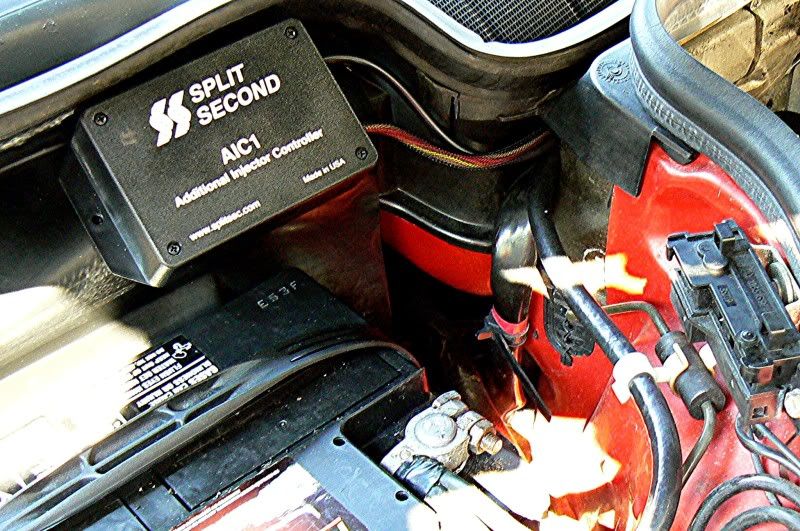RBYCC
MB Enthusiast
- Joined
- Aug 8, 2007
- Messages
- 1,137
- Location
- REHOBOTH BEACH DE USA
- Car
- 1971 280SL, 1988 300CE TT, 1994 E320 CAB, 1999 AMG C43, 2005 AMG G55K 2008 CLK63 AMG BLACK SERIES
Aka$h: Could I please clairfy that you are saying with only a split unit, I wouldn't need to delve into piston & conrod modifications, nor gasket modifcations and it would result in more power?
If I have understood the above, would it be beneficial to upgrade pistons, conrods & head gasket in addition to a second unit, or would the cost implications be too great for any further power advantages?
Darren
Darren
Aka$h is correct suggesting the Split Second additional injector controller.
It's low cost, easy hook up +/-12VDC, Speed signal from tach, vacuum line from manifold for the internal MAP sensor and wiring out to the additional injector(s)
Smaller then a cigarette pack and about 225 sterling.
I was probably the first to use this unit on a TurboTechnics install.
Initial suggestion was an Aquamist unit but it controls via potentiometers not software.
Not sure if you have any Split Second stockists in the UK,but available direct from Split Second in the USA.

Before you decide to purchase the TT kit, do a compression and leak down test..
Imperative that you're assured that all cylinders are within factory spec.
If you have a lower mileage engine with solid internals it can easily handle .5 bar boost and just about double your stock power.
The Split Second unit is programmed with a laptop with the car or a dyno or on the road...easy to attain a 11.7 AFR under boost which will preclude any detonation.
I found the TurboTechnics supplied controller to not keep consistent AFR' through the RPM range..
For added power a simple water/meth spray is an inexpensive system to install.
The beauty of the Split Second unit firing an additional injector(s) is that you leave the standard HFM in tact with no change to the factory settings. This allows the engine to pass any emissions testing.
Probably want to run a colder heat range spark plug and even a hotter coil.
Not a true bolt TT kit on but well worth the time and effort...:bannana::bannana:
Finished product with reasonable boost level will be very reliable...
It will probably end up costing the thousands and thousands that you reference...
More power means nothing if you can't get it to the road surface..which means suspension modifications and stickier tires on a larger wheel..
Good luck
Ed A.
P.S.
My M103-12V TT pulled 262HP and 302 torque on a Mustang load dyno at .5 bar boost....baseline pulls were 135HP and 145 torque against a publishe 177HP/188Torque...
Extrapolate from the published USA power numbers 262/135 x 177 = 344HP, 302/145 x 188 = 392 torque.
http://www.youtube.com/watch?v=1kCPCpL1_9k&feature=plcp
Last edited:



